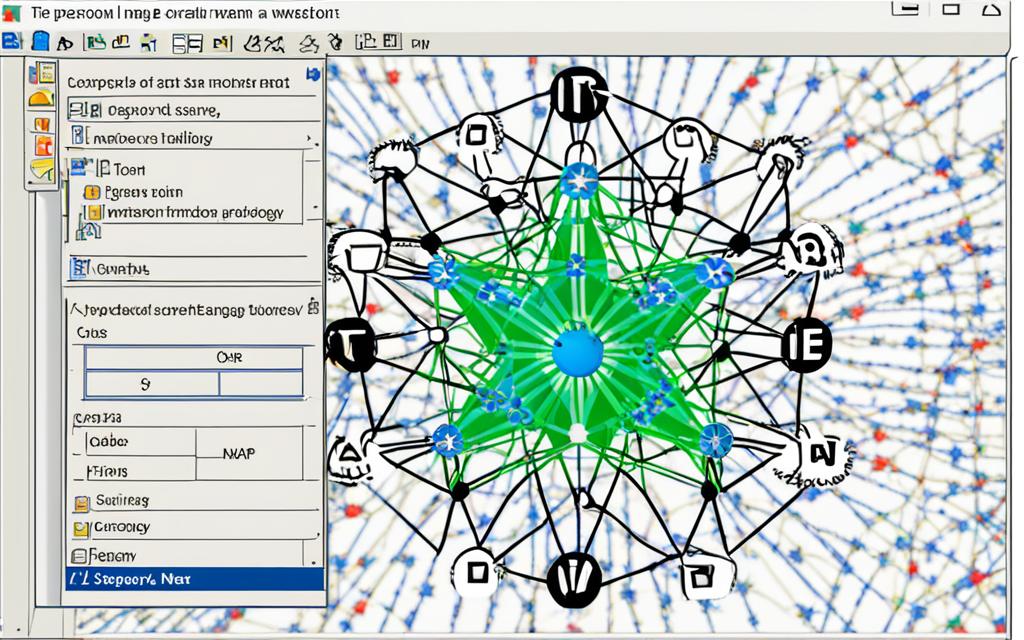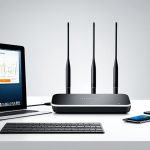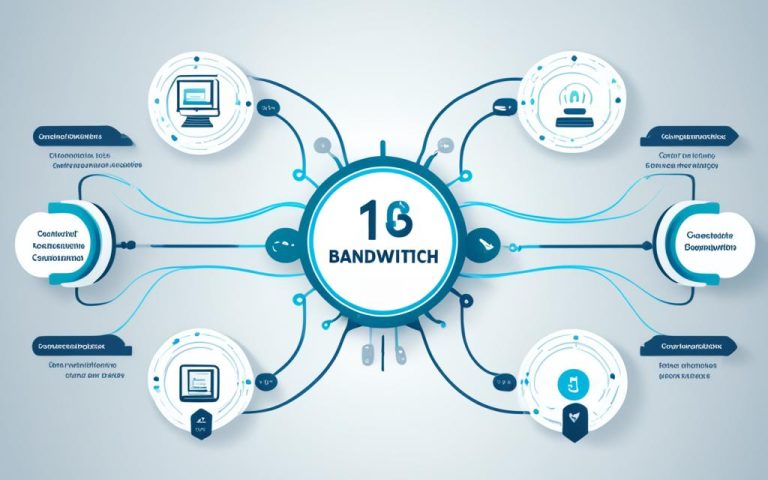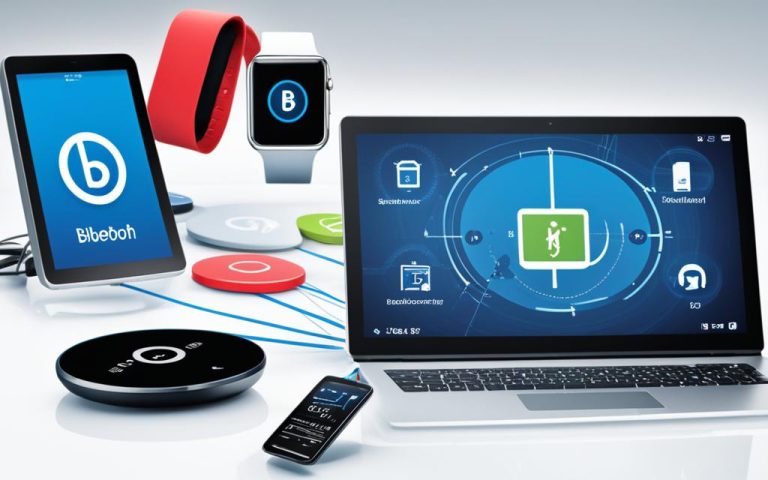A network topology refers to the arrangement of physical or logical connections between devices in a network. In the case of Personal Area Networks (PANs), the network topology is focused on interconnecting personal technology devices within a short distance, typically less than 33 feet or 10 meters. PANs can be established using various wireless technologies, such as Bluetooth, Infrared Data Association (IrDA), and Zigbee. There are different types of network topologies used in PANs, including point-to-point, bus, star, ring, mesh, tree, hybrid, and daisy chain.
Personal Area Networks (PANs) play a crucial role in optimizing connectivity between personal technology devices. Understanding the different network topologies in PANs, including point-to-point, bus, and star, allows for efficient communication and seamless connectivity between devices. By exploring and implementing these network topologies, individuals can enhance their personal devices’ functionality and improve their communication experience.
Point-to-Point Topology in PANs
Point-to-point topology is the simplest network topology used in PANs. It involves a direct, dedicated connection between two devices, allowing for mutual communication between the two hosts. This type of topology is commonly used in telephony models and should not be confused with peer-to-peer (P2P) architecture. Point-to-point topologies provide a straightforward and efficient way for two devices to establish a direct link and exchange data.
Point-to-point topology in PANs is characterized by a singular, direct connection between devices. This topology is particularly suitable for scenarios where devices need to communicate exclusively with each other and do not require connections to multiple devices simultaneously. The simplicity and efficiency of point-to-point topology make it an ideal choice for applications such as wireless headsets, keyboard and mouse connections, and file transfers between personal devices.
Implementing point-to-point topology eliminates the need for intermediary devices, resulting in reduced network complexity and lower latency. Two devices can establish a dedicated link, allowing for reliable and efficient communication.
In point-to-point topology, each device functions as both a sender and a receiver, enabling bidirectional communication. This direct link ensures a high level of data security, as there are no intermediate points vulnerable to unauthorized access. It also enables faster data transmission speeds since the bandwidth is dedicated to the two connected devices.
Advantages of Point-to-Point Topology in PANs:
- Simplicity: Setting up a point-to-point connection is straightforward, requiring minimal configuration.
- Efficiency: The direct link between devices allows for efficient data exchange without the need for additional network components.
- Security: Point-to-point connections offer enhanced data security by eliminating intermediate points prone to unauthorized access.
- Speed: As the bandwidth is dedicated to the two connected devices, point-to-point topology enables faster data transmission.
By leveraging point-to-point topology in PANs, users can establish reliable and secure connections between personal devices, facilitating seamless communication and data exchange. Whether it’s sending files between a laptop and a mobile phone or connecting a smartwatch to a smartphone, point-to-point topology delivers a simple and efficient solution for establishing direct links within a PAN network.
Bus Topology in PANs
A bus topology is another commonly used network topology in Personal Area Networks (PANs). In this type of topology, all devices are connected to a shared transmission medium, such as a coaxial cable. Each device can access the transmission medium to transmit signals, while other devices receive and evaluate the data to determine if it is intended for them.
This type of topology does not have a central network component controlling the network process, making it suitable for simple networks with a limited number of devices and low data transmission requirements.
Quote: “A bus topology allows for easy installation and scalability within a PAN network while minimizing the need for additional hardware.”
Compared to other topologies, bus topologies offer simplicity in setup and maintenance. However, they may introduce the risk of a single point of failure, where the entire network can be affected if the shared transmission medium fails.
Advantages of Bus Topology in PANs:
- Easy installation and scalability within a PAN network
- Cost-effective for small networks with few devices
- No requirement for a central network component
Disadvantages of Bus Topology in PANs:
- Susceptible to a single point of failure
- Lower data transmission speeds compared to other topologies
- Difficult to reconfigure or troubleshoot when issues arise
To better understand the advantages and disadvantages of bus topology, consider the following table:
| Advantages | Disadvantages |
|---|---|
| Easy installation and scalability within a PAN network | Susceptible to a single point of failure |
| Cost-effective for small networks with few devices | Lower data transmission speeds compared to other topologies |
| No requirement for a central network component | Difficult to reconfigure or troubleshoot when issues arise |
Implementing a bus topology in a Personal Area Network can be a viable choice when simplicity, cost-effectiveness, and a limited number of devices are key considerations. However, it is important to weigh the advantages and disadvantages to determine if it aligns with the specific network requirements and potential scalability needed within the PAN.
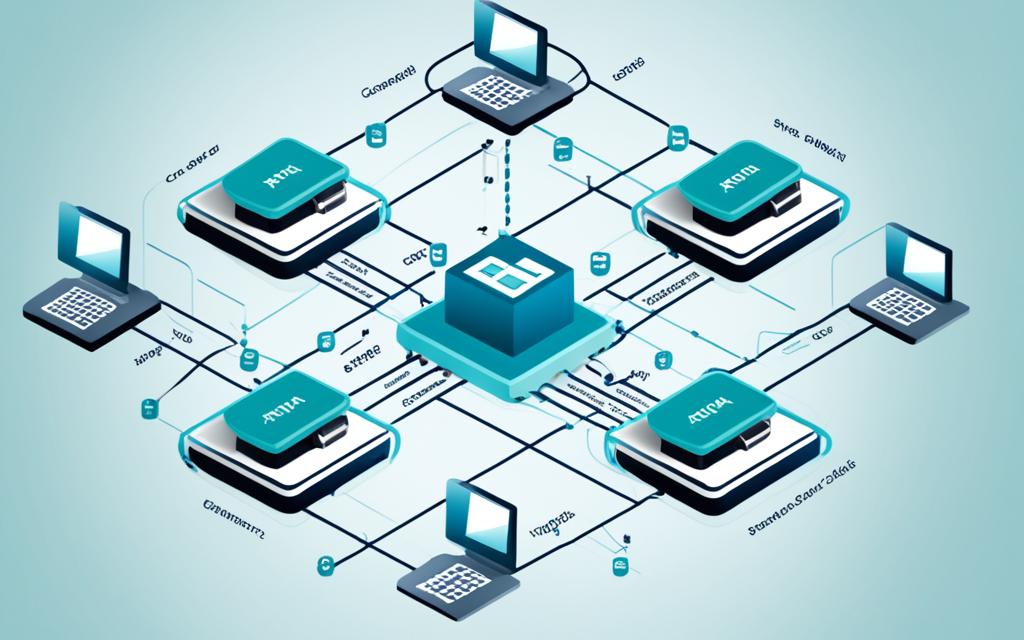
Star Topology in PANs
The star topology is one of the most widely used network topologies in PANs. It offers a centralized approach to connecting devices in a network, with each device being directly linked to a central network component, such as a router, hub, or switch. This central network component plays a crucial role in managing the routing function for data packets, receiving them from the source device and forwarding them to the intended destination device.
The star topology provides several advantages in PANs. Firstly, it allows for high data traffic within the central network component, as all data and connections flow through it. This ensures efficient and reliable communication between devices within the network. Additionally, the centralized nature of the star topology simplifies network management, as any changes or modifications can be made at the central network component without affecting the entire network.
In a star topology, if one device fails or encounters issues, it does not impact the functionality of the other devices in the network. This fault tolerance makes the star topology highly reliable for PANs, where uninterrupted connectivity is crucial.
One of the key considerations when implementing a star topology is the dependency on the central network component. If the central component experiences a failure, the entire network may be affected. Therefore, it is essential to ensure redundancy measures, such as backup components, are in place to mitigate the risk of network disruptions.
The star topology is particularly suitable for PANs that require effective communication between devices and the central network component. It allows for seamless data transmission and connectivity, making it an ideal choice for applications where reliability and efficient routing are paramount.
To illustrate the star topology in PANs further, let’s take a look at the following table:
| Device | Status |
|---|---|
| Device 1 | Connected |
| Device 2 | Connected |
| Device 3 | Connected |
| Device 4 | Connected |
| Central Network Component (Router) | Connected |
Each device in the network is directly connected to the central network component (router), establishing a star topology. This configuration allows for efficient communication between devices, with the router managing the flow of data packets.
Conclusion
Personal Area Networks (PANs) play a vital role in optimizing connectivity between personal technology devices in close proximity. By understanding the various network topologies available, individuals can establish efficient communication and seamless connectivity between their devices.
PANs can be established using different network topologies, such as point-to-point, bus, and star. Each topology offers unique advantages and is suitable for different network requirements. Point-to-point topology allows for direct and dedicated connections between two devices, facilitating mutual communication. Bus topology, on the other hand, connects all devices to a shared transmission medium, making it suitable for simple networks with limited devices. The star topology connects devices to a central network component, allowing for efficient communication and high data traffic within the network.
By exploring and implementing these network topologies, individuals can enhance the functionality of their personal devices and improve their communication experience. Whether it’s establishing a direct link between devices using point-to-point topology or connecting multiple devices to a central network component using star topology, PANs offer numerous possibilities to optimize connectivity within a short range.
As technology continues to evolve, understanding and utilizing PAN network topologies becomes increasingly important. By harnessing the potential of PANs and their network topologies, individuals can stay connected, seamlessly exchange data, and make the most of their personal devices.
FAQ
What is a network topology?
A network topology refers to the arrangement of physical or logical connections between devices in a network.
What is a Personal Area Network (PAN)?
A Personal Area Network (PAN) is a network focused on interconnecting personal technology devices within a short distance, typically less than 33 feet or 10 meters.
What wireless technologies are used to establish PANs?
PANs can be established using various wireless technologies, such as Bluetooth, Infrared Data Association (IrDA), and Zigbee.
What are the different types of network topologies used in PANs?
The different types of network topologies used in PANs include point-to-point, bus, star, ring, mesh, tree, hybrid, and daisy chain.
What is a point-to-point topology in PANs?
Point-to-point topology involves a direct, dedicated connection between two devices, allowing for mutual communication between the two hosts.
What is a bus topology in PANs?
In a bus topology, all devices are connected to a shared transmission medium, such as a coaxial cable, allowing each device to access the medium to transmit signals.
What is a star topology in PANs?
Star topology involves connecting each device in the network to a central network component, such as a router, hub, or switch, which manages the routing function for data packets.
Why are PANs essential for personal technology devices?
PANs optimize connectivity between personal technology devices within a short range, enhancing functionality and improving the communication experience.

